|
TennisOne Lessons Using the TennisOne “Comparison Engine” Forehand and Backhand Groundstrokes Dave Smith TennisOne Senior Editor TennisOne has recently provided one of the greatest learning tools since video for all tennis students: The new Comparison Engine found here provides one of the first ‘side by side’ observational tools to be made available without the purchase of expensive software for your computer or your own video camera.
The ability to capture several pros’ images and observe stroke, footwork, and swing characteristics can help open your eyes to many elements of advanced play. More specifically, you can identify two important concepts What are ‘Advanced Foundation’ stroke patterns which have similarities among pros hitting similar shots? And, what are individual ‘idiosyncrasies’ that are personal and/or created out of player personalities and individual playing characteristics. While both of these hitting elements are apparent in the observation of all pros, in terms of learning and developing your game you must differentiate between what I would call a ‘skilled foundation’ and what might be more personal ‘embellishments’ that such players integrate into their foundation. Using the Stroke Comparison Engine can help you identify these differences. Embellishments versus Stroke Foundation You must recognize that personal embellishments or what I call ‘Player Flourishes’ are exactly that: stroke components that are developed more through personal evolution (usually based on an ‘Advanced Foundation’) than through specific patterns learned or taught to the individual. Because such player embellishments have been created through personal evolution, they do not always translate into anothers player foundation. In fact, many embellishments can be very harmful to attempt to emulate. Because such individual-built nuances are unique to the individual executing them, they may lead to limitations or even injury to others who see such movements and try to mimic them. Looking for ‘Foundation’ Components of each Swing The Stroke Comparison Engine is a terrific tool to identify Foundation Components, those elements that you should look to copy. Such patterns are critical for advanced stroke execution. And that is what we will be doing here right now.
Forehand Comparisons Above Andy Roddick and Roger Federer are hitting nearly identical shots; backing out forehands where both players move to intercept the ball on the ad side just inside the baseline. As both players move back and to the side of the court, the ‘unit turn’ is very apparent with nearly identical positions by both players in holding their racquet in what we call a ‘stalking’ position. Both players hold the racquet with their non-dominant hand in an almost two-handed backswing position until their shoulder plane turns nearly perpendicular to the net. (Or parallel to the ball’s incoming trajectory.)
While Roddick holds his hand on his racquet a fraction longer than Federer, both players maintain a very distinct shoulder turn where the non-dominant arm is held across the body until each player starts the contact phase of the swing. (When the racquet either drops out of the loop with Roddick or when the forward movement towards contact is initiated as with Federer.)
Look at the similarities and differences between the two players in terms of arm positions. Note that while Roddick has a much higher hitting elbow during his backswing, both players end up with their racquet heads pointed straight up prior to dropping out of their loop swings and begin their acceleration towards contact.
Both players have a ‘double bend’ of their arm where their wrist and elbow joints form nearly right angles of the racquet to the forearm and the forearm to the upper arm.
Both players load up with both feet and launch into the shot with the inside foot (right foot) kicking back slightly as the outside foot comes forward. I call this pattern an ‘open to closed stance’ where the player starts with an open stance and brings the outside foot forward during contact. Federer’s weight is moving more out towards his left which forces him to land on his outside foot in a wider ‘brake step’ than Roddick and he is hitting an inside out forehand as opposed to Roddick who has hit an inside-in forehand for a down the line winner. In terms of body rotation, note that both players bring their bellybuttons 90 degrees from the full turn position to nearly facing the net. This amount of turn is dictated by their grips. Nearly full western grips (Roddick a tad more western than Federer), force each player open up to get their racquet around to the ball and out in front at contact. Note that while each player swings fully around their body, their bellybutton does not stray from this finish position. This is facilitated by their back leg kicking back to prevent over-rotation during contact. If this back leg didn’t kick back, the inertia of the swing would carry each player fully around and both would lose the integrity of their stroke. Unfortunately, many beginners attempt (consciously or otherwise) to swing with their body open without the leg kick. This results in such players pulling the ball well to the side of the court. Because their body understands this is where the ball will go, such players end up pushing the ball in the intended direction instead of stroking with topspin and rhythm. Two-handed Backhand Comparison
Here, Lleyton Hewitt and Marat Safin work a similar backhand stroke, moving to their left. While Hewitt is hitting a crosscourt and Safin a down the line, you will see simularities between the two: Both players have the same grip and general swing pattern and footwork. Noticeable differences is the height of the racquet on the backswing and the degree which both players pull their hands back fully during the backswing.
Although it is hidden, Safin bends his hitting elbow during the backswing while Hewitt maintains nearly straight arms. Safin also attacks the ball with a slightly lower front shoulder dip. Notice the strong leg drive at this juncture. Both players integrate a closed stance and get very low with their back knee at the lowest point of the backswing. Safin, hitting down the line, sets up with a more closed stance than Hewitt who is hitting crosscourt. One fundamental feature of a skilled, repeatable stroke is the issue of simply turning more to direct a ball down the line and less if taking the ball crosscourt...as opposed to changing the swing pattern or mechanics to change direction.
Unlike what some pros might suggest, both players stay down well through contact, not coming up at all until the ball is well gone. Some pros insist that players should come up during contact, as if to stand after sitting in a chair. While this can be seen in some shots, it is not that common. At contact, Hewitt is closer to his body and the racquet head definitely lower than Safin’s. Both players maintain a very low knee on their back leg during and well after contact. While Hewitt maintains a nearly straight line from the tip of his racquet to his dominant elbow which is bent slightly more than Safin’s, Safin pulls his racquet head up earlier with his left hand, a characteristic he has as he also shortens the radius of his swing earlier than Hewitt.
A key position point among most all two-handers is their hitting elbow staying close to their body. While there are a few exceptions to this, the vast majority of two-handers will use their hitting elbow as a ‘fulcrum’ to drive the non-dominant hand and arm over. If players were to lead with their hitting elbow and raise the arm out of this position, they would end up creating a very linear stroke, almost pushing the racquet towards the target instead of stroking with angular momentum out to the ball and around their body. While ‘pushing’ the racquet towards the target will elongate the hitting zone, it comes at a great cost of rotational speed of the racquet. Players don’t need a hitting zone of a foot to make consistent contact. Note too, the racquet face or ‘plane’ is kept the same throughout the swing. You don’t see the plane of the racquet rolling or twisting within the swing. This ‘keeping the plane the same’ is common among all skilled players. Yet, among recreational players, this aspect of the stroke often breaks down and is, in fact, one of the biggest culprits in creating an inconsistent stroke. Also, notice that both players keep their back leg back well through the stroke and don’t recover from their position until the stroke is complete. Another common fault among recreational players is the tendency to try and recover too early, oftentimes swinging their back leg around during contact. This compromises the integrity of the stroke and causes the player to be out of proper alignment during contact. With this incredible tool at your fingertips, you can compare literally dozens of common shots between pros. Next month, I will compare the one-handed backhand and serve among several pros. Your comments are welcome. Let us know what you think about Dave Smith's article by emailing us here at TennisOne .
TENNIS MASTERYFinally. a resource that unlocks these mysteries: • Why do m • Why are making changes in one's game so frustratingly difficult? • What tennis teaching methods are disruptive or detrimental to player progression? Read David W. Smith's TENNIS MASTERY and learn not just how to avoid playing at mediocre levels, but how the best players in the world Master the sport of tennis! "With a depth of knowledge and fresh perspective, TENNIS MASTERY is set to become a manual for tennis instructors and a measure for tennis literature." Richard Wigley, Director, Kayenta Tennis Center , Ivins Utah . Take in David Smith's 30 plus years in the tennis teaching industry. This 335-page manual will provide for every level of player as well as support for all tennis-teaching professionals, a blueprint for reaching higher levels of tennis mastery. Order TENNIS MASTERY at tenniswarehouse.com , or go to tennismastery.net for exciting excerpts from the book and a host of tennis information! And check out David Smith's other articles found here at TennisONE.com Learn more from Dave Smith at his Desert Shadows Tennis Institute!
Call (435) 628-5000 and ask for the tennis pro shop to learn more about Desert Shadows Tennis Institute. Learn the Advanced Foundation, discover tools to master more advanced techniques for all strokes, and discover that staying at the same level you are is NOT AN OPTION! A select number of camps are available but space is very limited. The DSTI camps take place in St. George, Utah, in the heart of ‘Color Country’—the incredible beauty of Southern Utah. Zion, Bryce Canyon and Grand Canyon National Parks are all nearby! Hurry to reserve your spot now for a true ‘tennis destination’ opportunity! “The most informative, intuitive tennis camp I have ever attended.” Randy S. Colorado “Dave and his staff have a passion for the game and a personal care for their students.” S. Loo, Nevada “The depth of instruction is far superior to that of other tennis camps I’ve been.” Tom T. Nevada |

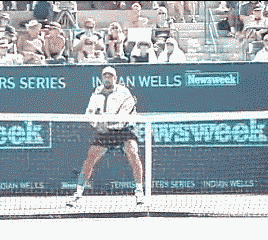
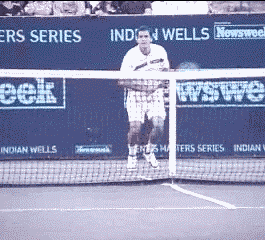
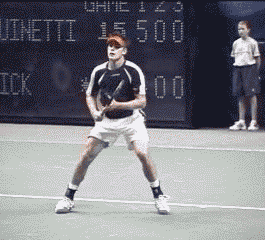
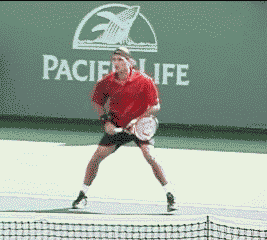
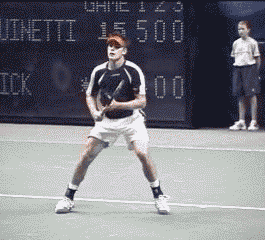
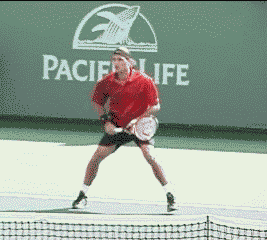
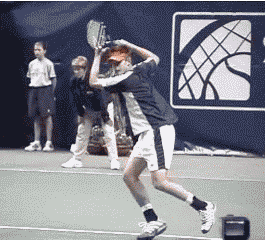
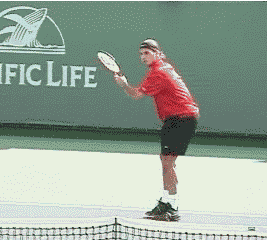
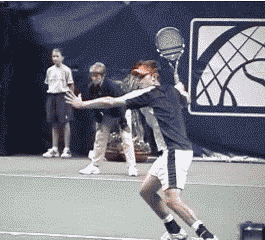
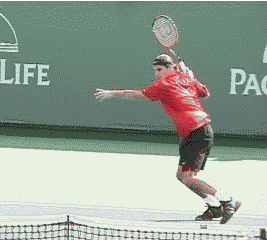
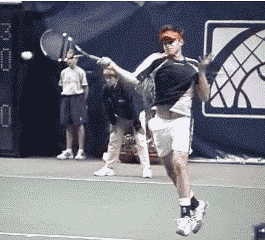
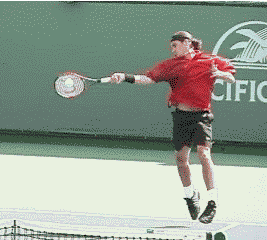
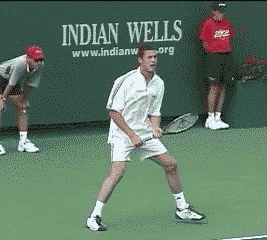
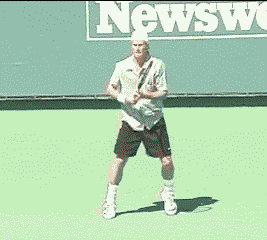
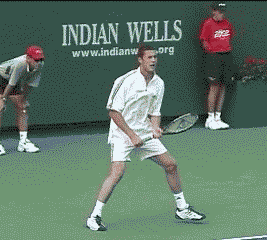
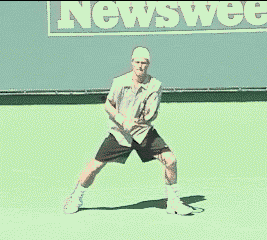

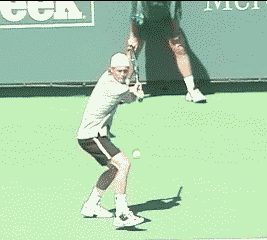
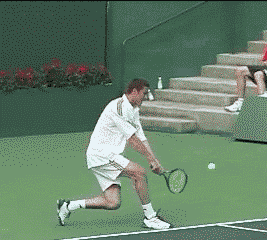
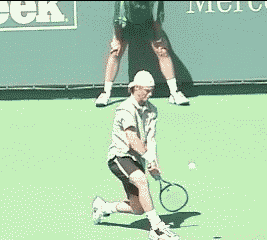
 illions of tennis players stagnate at levels far below their potential?
illions of tennis players stagnate at levels far below their potential?  Join Dave Smith in an intimate, ultimate tennis camp: Desert Shadows Tennis Institute (DSTI) is an intense, 3-day camp that accepts only 12 players to work directly with Dave and his staff of certified and accomplished pros. Over 18 hours of tennis instruction is included along with a copy of Dave’s best-selling tennis book, TENNIS MASTERY, a DVD of instruction, breakfast and lunch each day, and a lifetime of tennis secrets!
Join Dave Smith in an intimate, ultimate tennis camp: Desert Shadows Tennis Institute (DSTI) is an intense, 3-day camp that accepts only 12 players to work directly with Dave and his staff of certified and accomplished pros. Over 18 hours of tennis instruction is included along with a copy of Dave’s best-selling tennis book, TENNIS MASTERY, a DVD of instruction, breakfast and lunch each day, and a lifetime of tennis secrets!